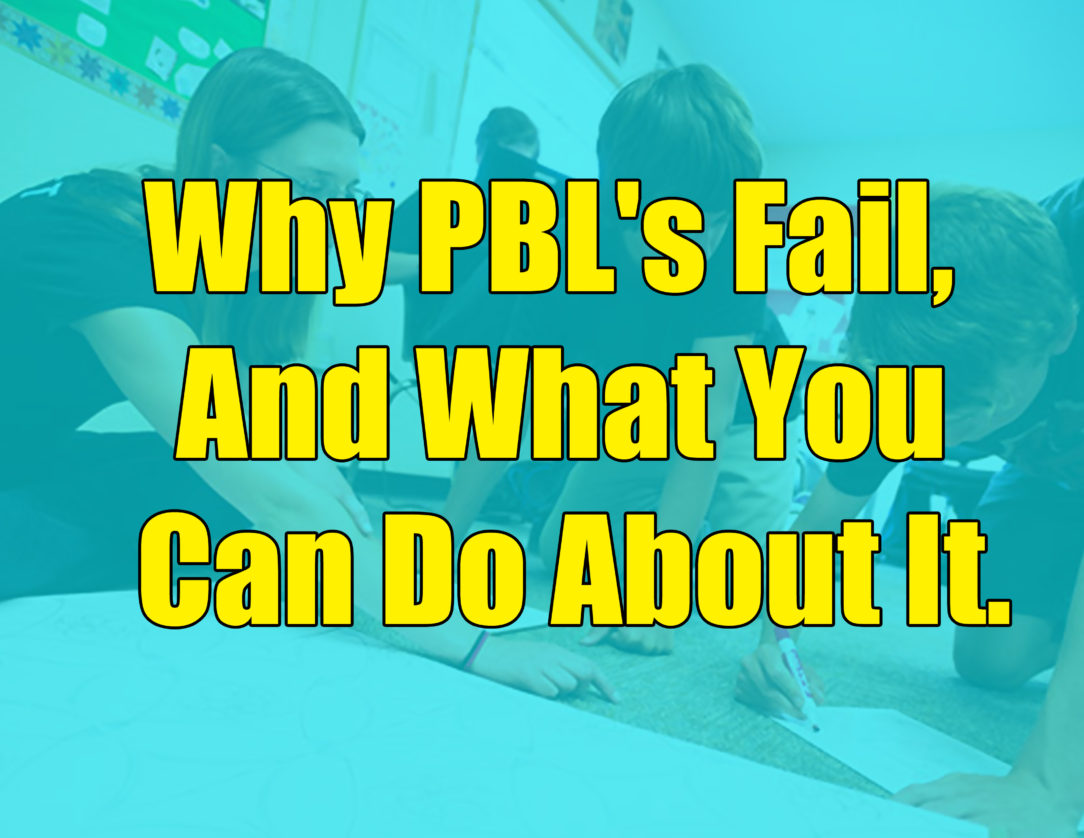The Power and Pitfalls of PBL’s
Alright, lets just get this part out of the way first: I realize there are drastic differences between project based learning and problem based learning experiences, but for the purpose of this post I am going to hybridize the two concepts because the content of what you are about to read is relevant for both project based, as well as problem based learning experiences.
PBL’s are a great learning tool. They can increase engagement, help connect students to larger concepts, and enable teachers to show cross-cutting or cross-curricular concepts in a way that students can really buy-in to. I use PBL’s all the time, but I see others stumble, fall, and curse the name when they are implemented improperly.
The problems with PBL’s (haha…get it?)
Let me preface this by saying that there is no definitive “right” way to implement problem based learning, but I would strongly argue that there are plenty of wrong ways to do it. Often, when teachers start implementing PBL’s they think that they are going to provide an awesome “artifact” or engaging “hook” and in 2 – 3 magical weeks the students will have produced these amazing products of learning. The problem is that they don’t plan the day-to-day and just assume that the PBL will run itself.
It is in the facilitation of problem based learning that the majority of learning occurs. If you expect students to “connect all the dots” alone and without your guidance (and without well thought out planning) you’re most likely in for a struggle. The end result will most likely be a chaotic few weeks and products that are less than stellar with little concrete evidence of learning or growth.
Things you can do to make your next PBL Great
When you design and implement problem based learning, think about how you will structure the learning experience. Think about providing daily check-ins and exit discussions to monitor progress. You can also break the project into tasks and organize it into a self-paced system to allow students the freedom to work but with the accountability of formative check-ins or assessments.
All of these solutions center around the idea that the project is structured, well thought out, and delivered to learners with purpose and clearly aligned objectives in mind. I would also suggest starting the project with individualized tasks. This ensures that students (before entering into groups) have a basic understanding of the content as well as their own individual ideas. This will make your groups more productive and avoid the all too common “Johnny did all the work and we watched him” scenario.
So the next time you are considering a problem based learning (or project based learning) experience, make sure you plan out the entire journey and not just the first step. PBL’s, as I stated, are an amazing learning tool, but if you don’t provide structure, the outcomes and success of the experience will not reflect that awesome idea that got you excited about it in the first place.
The freedom for your students to explore and take control of their own learning is (and always will be) important to increasing student achievement, but sometimes it is the structure, framework, and guidance we put into place that allows that freedom to occur.
Happy teaching and best of luck on your next PBL! As always, stay awesome and always strive to Teach Better.



